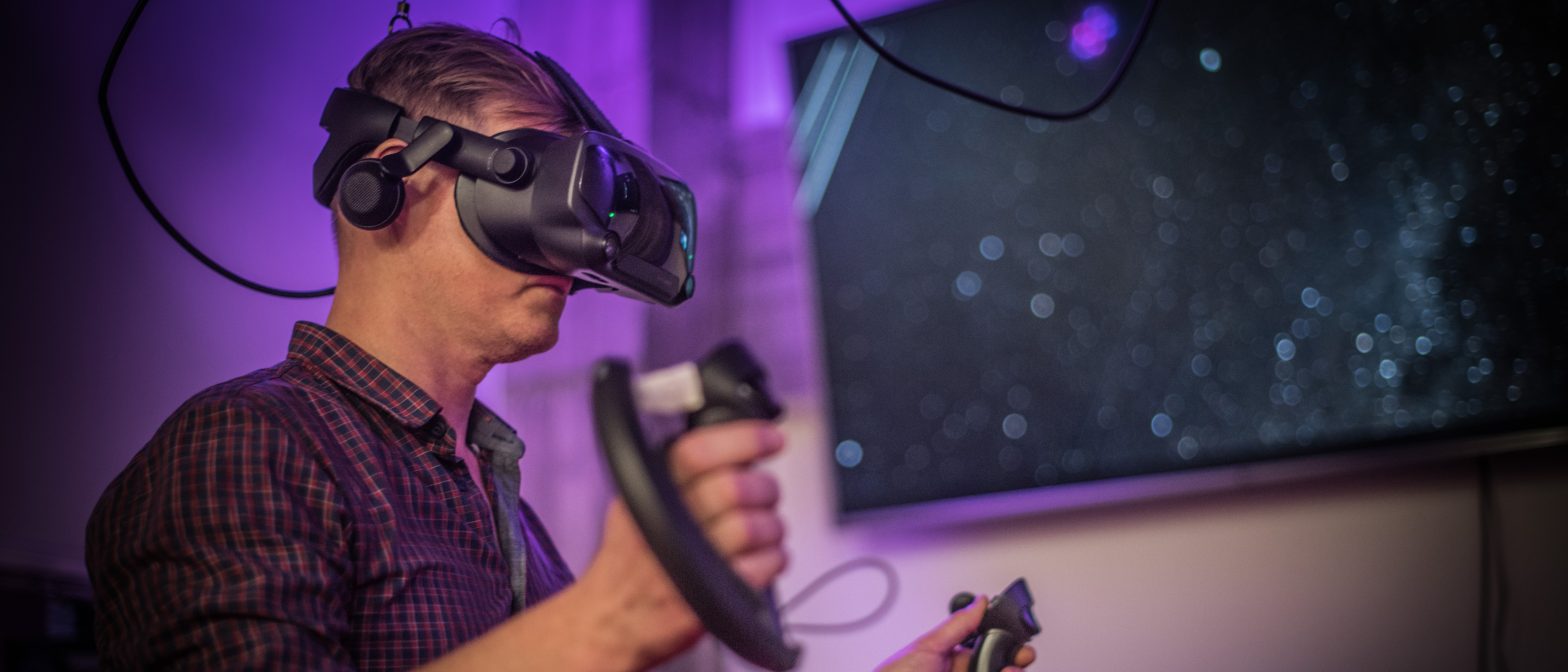Aalto Studios hosting MAGICS tech infrastructure in Aalto University
Photo: Sami Perttilä
Aalto University, the University of the Arts Helsinki, and Tampere University have received a research infrastructure grant of €2.4 million from the Academy of Finland for the MAGICS project. The universities are forming an infrastructure network to support research into motion recording and virtual environments. The project focuses especially on immersive and natural presence, in which the participant is made a part of a virtual world.
MAGICS uses the latest digital technology to create artistic performances, realistic games, and other remote presence solutions. The consortium is headed by Professor Mikko Sams of Aalto University.
A concrete example of the new technology is a collaborative virtual studio project involving the national broadcaster Yle and Keho Interactive.
‘One person can be physically located in a virtual studio at Yle, and another one at Aalto Studios. The motion data from the camera can be moved from one studio to another so that the people are in exactly the same space from the viewer’s point of view’, says Marcus Korhonen, technical director of the project and Director of Aalto Studios.
The team at Aalto focuses on measuring, analysing, and digitising the behaviour and experiences of people taking part in research, performances, and games in situations that are as real as possible. The team at Tampere University builds and uses virtual worlds and telepresence in game research and display technology.
The MAGICS equipment allows the researchers to precisely measure and analyse the body functions and facial expressions. The measurements help them to understand how people interact and understand each other, and what kinds of emotions emerge while, for example, playing games. New technology can be used in the performing arts in many ways: for example, performances can be viewed in many locations simultaneously, and scenery can be produced completely virtually.
‘Visual cues, interaction, and senses can be very lifelike. Viewers can move and experience being inside a theatre performance. In addition to realistically recreated visual scenes, they can sense dampness with the help of special gloves, or they can smell synthetically produced odours’, says Professor Atanas Gotchev, of Tampere University, deputy director of MAGICS.
The MAGICS infrastructure is shared among all three universities. The infrastructure services of Aalto University cover Aalto Studios and the Aalto Behavioral Laboratory (ABL). Infrastructure at Tampere University focuses on the Centre for Immersive Visual Technologies (CIVIT) and the Tampere Unit for Computer-Human Interaction (TAUCHI). The infrastructure of the University of the Arts Helsinki is anchored in the Centre for Artistic Research (CfAR). Physical and virtual infrastructure services are available to meet the needs of academic personnel and those of industrial product development. Infrastructure contains both stationary and movable equipment.
During 2021, we will bring our services, facilities with booking systems and example projects at our web site https://magics.fi .
